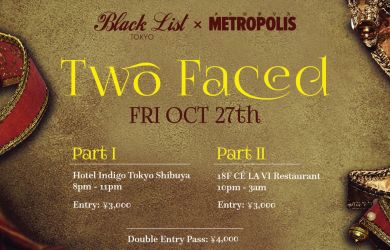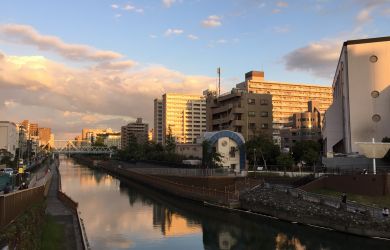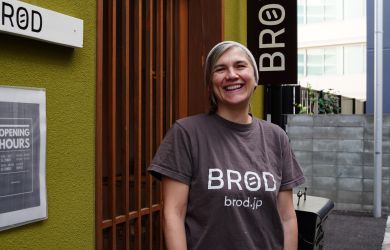
Originally published on metropolis.co.jp on October 2010
 What is a “bridge wine”?
What is a “bridge wine”?
It’s an American wine that tastes more like a French wine or other Old World wine. I put bridge marks next to them to inform guests which one is which. The more bridges, the more it has in common with the French counterpart—three bridges is the closest, yet not necessarily the best. I did it because, as a sommelier trained in the Napa Valley, I feel obliged to educate Japanese about American wines! People here in Tokyo, including sommeliers, have a misunderstanding about American wine. Many still believe that American wine has only two types: big, rich cabernets and oaky, buttery chardonnays. Considering the most famous California wines, I can’t help but admit that those are the most popular ones. However, there’s a lot more that American wine has to offer.
Can you give us some examples?
One bridge: Littrai “Charles Heints” Chardonnay 2007 Sonoma Coast. This is potentially a two- or three-bridge wine, with fresh pear and apple flavors followed by minerals, lemon mélange and a touch of hazelnut.
Two bridges: Mount Eden Cabernet Sauvignon 2003 St. Cruz Mountains. This wine comes from a mountainous area with a cool climate that gives it concentrated yet fresh fruit aromas. Their winemaking method enhances the terroir rather than obscuring it—classic Old World bouquets, such as complex cigar box and earthy dry leaves, which have been pushed forward by bottle aging.
Three bridges: Nichols Pinot Noir 1997 Central Coast. If you love Armand Rousseau’s Chambertin, you are sure to like this wine. But if Kosta Browne Pinot Noir is your favorite, the chances are that you’ll hate it—it’s full of earthy mushroom, wet leaves, black tea, leather and roasted meat. If you can identify this as a California Pinot Noir in a blind tasting, you are either a genius or cheating!
What wines do you recommend for specific dishes at Hortensia?
I recommend the Spottswoode Sauvignon Blanc St. Helena, Napa Valley 2008 with watari crab bisque, crab flan and cappuccino froth.
A very rich dish like this usually requires a rich white wine such as Burgundy or chardonnay, but I like this generous Napa sauvignon blanc with no bridge mark. It has enough ripeness, which comes from the Californian sunshine, to stand up to the richness of the dish. The giveaway is its crisp acidity and herb scents—sauvignon blanc’s signature characteristics—which offer a refreshing effect on the intense crab flavors.
I also recommend Siduri “Hirsch” Pinot Noir Sonoma Coast 2007 with our roasted quail stuffed with foie gras and raisin-port wine sauce. I usually recommend a red Burgundy or pinot noir with some bridge marks for a quail, but for this hearty dish, I prefer this rich California pinot noir with no bridge mark. It has enough “weight” to stand up to the rich texture and flavors. Besides, the good acidity derived from the intense cold wind that constantly flows in the “true” Sonoma Coast cuts the fattiness of the foie gras.
See restaurant review for contact info.







